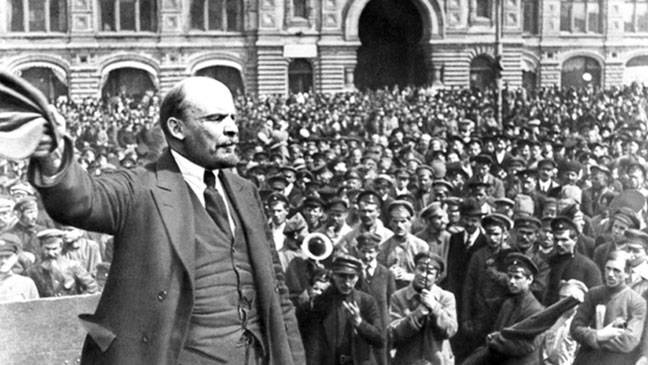“Without revolutionary theory there can be no revolutionary movement.” –Vladimir Lenin
Lenin is accredited with putting Marx’s revolutionary theory in practice.
The Russian Revolution of 1917 was one of the most explosive political events of the twentieth century. The violent revolution marked the end of the Romanov dynasty and centuries of Russian Imperial rule. During the Russian Revolution, the Bolsheviks, led by leftist revolutionary Vladimir Lenin seized power and destroyed the tradition of czarist rule. On November 6 and 7, 1917 (or October 24 and 25 on the Julian calendar, which is why the event is often referred to as the October Revolution), leftist revolutionaries led by Bolshevik Party leader Vladimir Lenin launched a nearly bloodless coup d’état against the Duma’s provisional government. The provisional government had been assembled by a group of leaders from Russia’s bourgeois capitalist class. Lenin instead called for a Soviet government that would be ruled directly by councils of soldiers, peasants and workers. The Bolsheviks and their allies occupied government buildings and other strategic locations in Petrograd, and soon formed a new government with Lenin as its head. Lenin became the dictator of the world’s first communist state.






